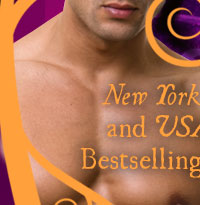I make my living as a freelance writer and editor. Therefore, I find that my standards for professional quality content differ from that of many self-published authors, because I cannot separate the quality necessary for my clients from the quality necessary for my own stories.
Being an avid reader as well as a writer and editor, I encounter far too many self-published books that make me cringe. From misused apostrophes to malapropisms to incorrect grammar to tense switches between past and present so frequent as to give H. G. Wells whiplash, these writers lack understanding of what I call the mechanics of language.
However, correct grammar in itself does not translate into good writing. Writers who commit the sins attendant upon poor language mechanics also and often fail to grasp the intricacies of good storytelling: minimize passive voice, avoid information dumps, use adverbs sparingly, reduce expository description to only that which is necessary, and eschew obfuscation. (If you didn’t get the two instances of irony in that last sentence, then you probably shouldn’t consider yourself a professional writer.)
The hallmark of a professional writer lies in the skill with which he or she executes an idea.
If one subscribes to the literary authorities regarding story plots, then one must also admit that every overarching plot has already been written. In his 2004 book, The Seven Basic Plots: Why We Tell Stories, Christopher Booker declares that literature has only seven basic plots that storytellers everywhere and in every medium continuously recycle: 1) overcoming the monster, 2) rags to riches, 3) the quest, 4) voyage and return, 5) rebirth, 6) comedy, and 7) tragedy. (Yes, the plots can and do overlap within a story.) Other authorities cite the number of distinct, archetypal plots to six, nine, and thirty-six. The Guardian reported on an academic study, conducted in 2016, that analyzed commonalities among the plots of 1,737 stories. According to the article, the two most popular plot archetypes basically fall into two general story arcs reminiscent of Oedipus and Cinderella.
For those who write romantic fiction, the Cinderella archetype reigns. Look at practically any story within the umbrella genre of romance or its myriad sub-genres and you’ll find that requisite happily ever after or HEA ending. Sometimes, the HEA is temporary, labeled in the industry as happy for now or HFN. Regardless of whatever tragedy befalls the protagonists throughout the story’s journey, the story ends on a note of hope and happiness.
Those who write romance then ought to understand that their overarching plots are not original. What is original is how the author treats that selected plot. The permutations upon a well-used plot often fall within the parameters of certain sub-genres, of which the most obvious copy of the Cinderella story is the billionaire romance. The tired old plot becomes fresh with the addition of unusual circumstances that affect the characters, with the writer’s skill in creating witty repartee, and the writer’s ability to convey emotion and ambiance such that that reader shares the main characters’ experiences.
Great storytelling requires more than a good idea, because all the good ideas have already been used. Great storytelling demands expert execution and manipulation of language to refresh the old idea and give it new vigor.
Bear of the Midnight Sun

After a thousand years, immortal polar bear shifter Sindre finally finds his mate—on a talk show. In the city where anything goes, an impromptu wedding is just a taste of what’s to come. Startled into going through the ceremony, Miranda can’t stop the big, virile man from staking his claim on her and releasing her bear. Sindre can’t believe his good luck and will do anything to keep his mate at his side, up to and including taking marital advice from Atlas Leonidus. An independent woman with a successful career, Miranda melts at his touch and shuns his control, except she can’t control her bear.
About the Author
Holly Bargo has over 25 years of professional writing and editing experience. She has published 20 books spanning the fantasy and romance genres and writes from the perspective of having made all the mistakes and helping other writers learn from those mistakes. Her latest book, Bear of the Midnight Sun, will be released on October 31, 2018, in both e-book and print format. Holly lives on a small hobby farm in southwest Ohio.


















